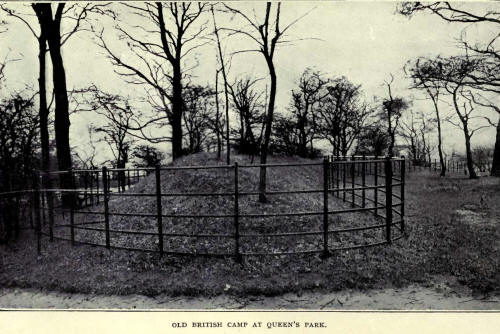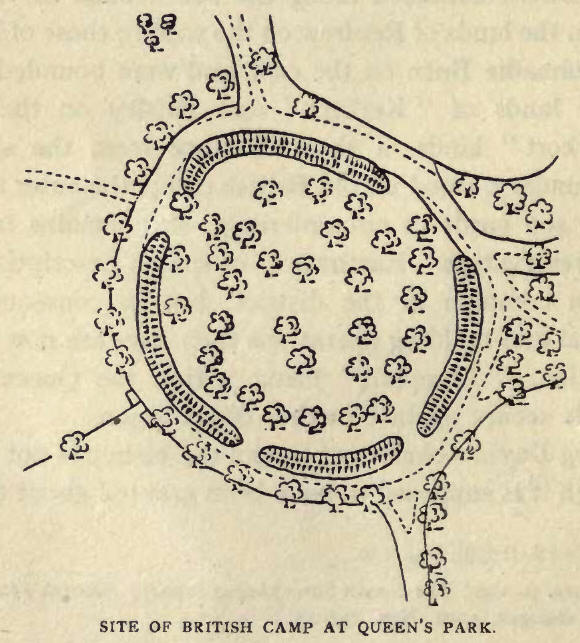|
BEFORE the end of
King David's reign the diocesan reorganization of the whole of the
country was completed, and the foundation of the various bishoprics
and appointment of the bishops were followed by the erection of
cathedral chapters, usually of secular canons, constituted for the
most part on English models. The chapter of Glasgow was based on the
model of Sarum (i.e. Salisbury), the ritual of which was likewise
adopted. But for the completion of such arrangements some little
time would be required, and meanwhile the building of a suitable
church had to be undertaken. Towards the building and restoration of
the church Prince David, in the year 1123, granted one hundred
shillings yearly from the rents of Hardingestrorna within the
earldom of Northampton, which earldom he had acquired on his
marriage with the Countess Matilda, and to this grant his wife was a
consenter. [Reg. Episc. No. 2; Lawrie's Charters, No. 46.] No
portion of this early structure has survived, but the general plan
is indicated by a fragment of the immediately succeeding work which
is still preserved at the west end of the present lower church.
Though in the original design a completed church was no doubt
contemplated, the first object would be the erection of the Choir,
with its High Altar, where a beginning might at once be made in the
exercise of divine worship. From the slope of the ground the
building would naturally be in two storeys, the High Altar in the
Choir being placed over the shrine in the crypt, or lower church,
containing the relics of St. Kentigern. Only this part of the work
seems to have been accomplished when the new church was dedicated in
July, 1136. [Cathedral (1901), pp. 9, 10.]
At the dedication of
the new church King David granted to God and St. Kentigern part of
the land in "Perdeyc" territory which has already been referred to
as an old possession of the British Kings. The portion which was now
assigned to the church is described in the grant as the land which
Ascelinus, archdeacon, held of the King, "in wood and plain, waters
and fishings, meadows and pasturages, all as Ailsi and Tocca held
the same on the day in which the land was in the king's demesne."
The archdeacon, however, was to remain in possession during his
lifetime, paying to the church a silver mark and rendering such
services as he had been accustomed to do to the King, but after his
decease the land was to remain with the church free and quit of all
such claims. At a subsequent but unknown date David bestowed on the
church another part of "Perthec," and he also, by a charter, granted
prior to 1152, gave "Guven, with its marches," to be possessed by
the church of St. Kentigern of Glasgow and the bishopric, free and
quit of all, customs and services. [Reg. Episc. Nos. 3, 6, 7.]
Before referring more
particularly to these grants and their utilization for the
augmentation of cathedral services, it may here be noted that the
remainder of the lands of Partick, to give the old royal demesne its
modern name, was either granted or confirmed by Malcolm IV. to
Walter, son of Alan, the High Steward, who had obtained from King
David extensive lands, including those of Renfrew on the south side
of the Clyde. At this part the river was late in being confined to a
settled course, as may be seen from the numerous islets shown on
Blaeu's map, the survey for which was made in the beginning of the
seventeenth century, doubtless after many changes in the channel
since Malcolm's time. In the charter by that King to the Steward,
confirming both his office and lands, there is included " as much of
Prethec as King David held in his hand," and it is stated that
Malcolm gave and confirmed the same for services which the Steward
had rendered to King David and him. [Reg. de Passelet, Appendix I.]
Thelands so bestowed, so far as not composed of river islets, were
situated on the north side of the Clyde, and are now merged in the
parish of Renfrew. Having long ago lost their original name, the
lands now include such well-known places as Yoker, Scotstoun and
Jordanhill.
The town of Renfrew,
occupying part of the royal demesne, had been erected into a burgh
by King David, and about the same time he gave its church to Bishop
John of Glasgow, who thereupon constituted it a prebend of his
cathedral. After the bestowal of the lands on Walter the Steward and
the foundation by the latter of Paisley Abbey, the monks claimed
right to the church of Renfrew as being within the parish of
Paisley, but by a Bull of Pope Urban, granted about the years
1185-7, the church of Renfrew was confirmed to the Bishop of
Glasgow, and by a formal agreement entered into between the years
i208 and 1232, the Abbot renounced all claim to the church. [Reg.
Episc. Nos. 66, 113.]
As stated in a
previous chapter, the lands of Partick appear to have been
extensive, though they are nowhere precisely defined. One of the
four wards into which the barony of Glasgow was latterly divided was
called Partick Ward, embracing property as far east of the River
Kelvin as Shettleston, but this can scarcely be accepted as more
than an indicationthat to some undefined extent the lands of Partick
included a portion of that area.
In Walter Bower's
continuation of the Scotichronicon it

is stated that Saint
Constantine, King of Cornwall, leaving an earthly kingdom, became a
soldier of the heavenly King, and, along with Saint Columba, went to
Scotland and preached the faith to the Scots and Picts; that he
founded a monastery of brethren at Govan on the Clyde, over whom he
was abbot, and that he converted the whole land of Kintyre, where he
died a martyr for the faith, and was buried at Govan. [Goodal's ed.
(1759), i. P. 130.] Other chroniclers give narratives to similar
purport, and that there was a church or monastery at Govan, long
before the time of King David, seems to be further evidenced by the
fact that there are preserved in the churchyard various sculptured
stones of ancient workmanship, including an elaborately decorated
sarcophagus, believed to be the shrine of St. Constantine, king and
martyr. [Scots Lore, p. 106 ; The Govan Sarcophagus (1902); Scottish
International Exhibition Catalogue, 1901, Nos. 238-47.] When Govan,
therefore, came into possession of Glasgow bishopric it seems to
have had a church as well as a village and an agricultural community
occupying a considerable tract of land. The territory bestowed by
King David extended along the south bank of the river Clyde from the
lands of Renfrew on the west to those of Rutherglen at Polmadie Burn
on the east, and were bounded by the stewardry lands of "Kerkert"
and Paisley on the south. On "Kerkert" lands, a short distance from
the southern Govan boundary, stood an old British camp, the outer
rampart of which, 400 yards in circumference, still remains in a
fair state of preservation. Earthworks of similar description must
have been common in the district, but in consequence of agricultural
and building operations their sites are now beyond identification. "Camphill,"
being within the Queen's Park grounds, is secure against further
dilapidation.
In King David's
charter of Govan the bishop is not named, and though it is supposed
to have been granted about the year 1134 it is uncertain in whose
episcopate the church was originally formed into a prebend of the
cathedral. By an undated writing Bishop Herbert, who succeeded John
in 1147, gave and confirmed the prebend to "Help," his clerk,
describing it as the church of Govan, with all its ecclesiastical
rights, and the islands between Govan and Perthic, and that part of
Perthic which David, King of Scots, gave towards the endowment of
the church of Glasgow at the dedication thereof, and another part of
Perthic which the same King afterwards gave to that church and to
Bishop John. It is stated that parts of the lands thus dedicated did
not formerly belong to the prebend, but that they, with the adjacent
islands and fishings, were bestowed by Bishop Herbert, for
augmentation of the honour and dignity of his church. [Reg. Episc.
No 7] It was in consequence of these arrangements that when the
parish of Govan was formed and defined its northern section extended
beyond the river Clyde.

|
